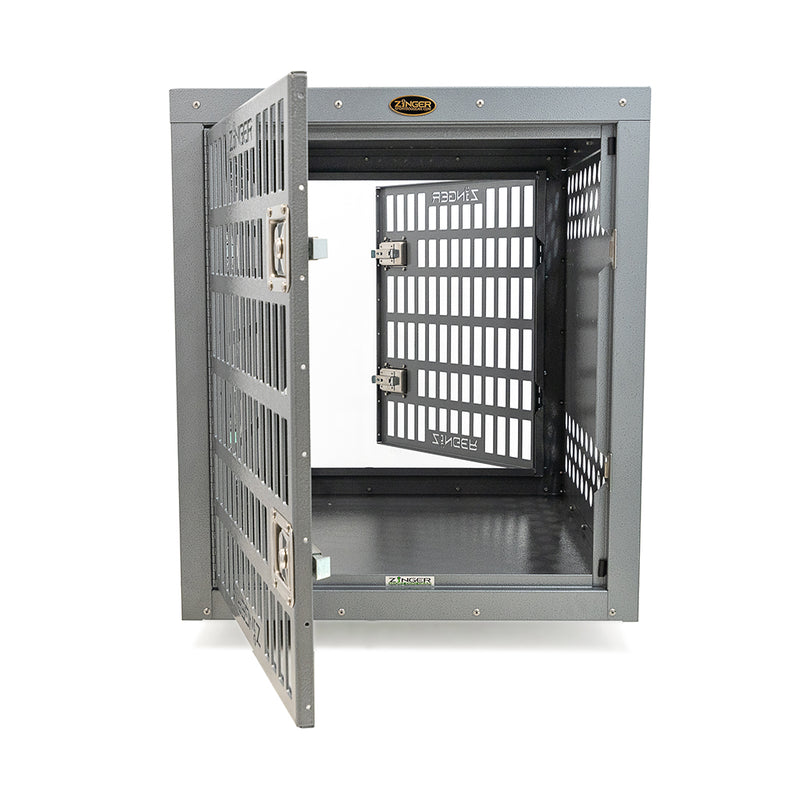Your Cart is Empty
Electronic Collars
Collars and Leads
Dog Tracking Systems
Dog Training
Bird Launchers
Hunting Dog Supplies
For The Hunter
What is Canine Pancreatitis?
November 14, 2021 5 min read 1 Comment

If you have been following along with our series of blogs about foods not to feed your dog, you’ll notice that a common side effect of these foods is often pancreatitis. If you aren’t familiar with pancreatitis, continue on reading to learn about what canine pancreatitis is, what causes it, what the signs your dog is experiencing it are, the different types of pancreatitis, and what you should do if your dog has pancreatitis. If you want to jump around to get specific information quicker, each section is clearly titled.
What is the Pancreas and What Function Does It Serve?
The pancreas is part of your dog’s digestive system that the main role is to produce and release enzymes that aid in digestion. In a healthy pancreas, the enzymes that it produces stay inactive until they reach the dog’s small intestine, where they then activate and help digest the food. The pancreas also produces hormones such as insulin, which regulates blood sugar or glucose metabolism. In a normal functioning pancreas, the digestive enzymes enter the digestive tract and the hormones are delivered into the blood stream.
For more information on the dog’s digestive system read, Importance of the Dog Digestive Health.
What is Canine Pancreatitis?
Pancreatitis basically means “inflammation of the pancreas.” Pancreatitis can present in two different forms. The first type of pancreatitis is a mild, edematous form. The second is the more severe, hemorrhagic form. We will cover these more in the next section.
When a dog is suffering from pancreatitis, the pancreas acts up and does not perform as it is supposed to. The enzymes that are normally inactive until reaching the small intestine become active earlier than they should. In severe cases, they become active as soon as they are produced. These enzymes becoming active earlier not only causes issues with digestion, but also more or less digests parts of the digestive system as it travels through it. In severe pancreatitis, this means that the pancreas itself will begin being digested by its own enzymes. In a normal functioning pancreas, enzymes are passed into the digestive tract, but in some cases of pancreatitis, these enzymes can be spilled out into the body cavity. As one may assume, this results in damage to the liver, bile ducts, gall bladder, and intestines. Canine pancreatitis, because of the inflammation, can be very painful for the dog.
Types of Pancreatitis
As mentioned above, pancreatitis comes in two forms: mild and severe. In mild cases of pancreatitis, the enzymes released from the pancreas activate earlier than normal, but not to the point that it causes major organ damage. In mild cases, the hormones produced by the pancreas can fluctuate, causing issues with your dog’s mood and blood sugar levels.
The more severe cases of pancreatitis can be life threatening and cause extreme damage to the dog’s organs. In severe pancreatitis, the enzymes that are produced go active the moment they are created. These enzymes are then either entered into the digestive tract where they begin digesting the digestive organs or are spilled into the body cavity, causing damage to other nearby organs, such as the liver. Because these enzymes go active the moment they are created, they often will begin digesting the pancreas itself, making the condition worse. It’s a vicious cycle. Dogs that are able to recover from severe pancreatitis will often have recurrent bouts of the disease, which is referred to as chronic or relapsing pancreatitis.
Signs and Symptoms of Canine Pancreatitis
If a dog is experiencing pancreatitis, there are a few signs to be aware of. These signs and symptoms include:
- Nausea
- Vomiting
- Fever
- Lethargy
- Abdominal Pain
- Diarrhea
- Decreased Appetite
During a release of the activated enzymes, an affected dog may display a behavior where they lower the front half of their body to the floor with their rear end up in the air, similar to when they are stretching, but will remain in this position the length of the enzyme release. If the enzyme release is severe enough, the dog may experience severe depression, acute shock, or even death depending on the size of the release.
What Causes Canine Pancreatitis
Canine pancreatitis happens when the pancreas becomes inflamed and “acts up,” producing activated enzymes instead of inactive. The exact cause of this is unknown and sometimes seems to happen out of the blue for no reason. The following are some possible causes for pancreatitis:
- High fat diet, especially large amounts of fat in a single meal
- Obesity
- Hypothyroidism
- Severe blunt trauma to the pancreas
- Certain medications and toxins
- Some cases may be genetic predisposition with certain dog breeds
Pancreatitis can happen at any age, sex, or breed of dog. Some research has shown that some breeds of dogs may be at a higher risk of pancreatitis. These breeds include Miniature Schnauzers and some other smaller toy and terrier breeds.
High fatty content foods are believed to be the most significant cause of pancreatitis. For foods not to give to your dog, see our blogs: Meats to Never Give Your Dog and Four Fruits to Never Give Your Dog.
Treatments for Canine Pancreatitis
Unfortunately, if a dog has pancreatitis, there is no treatment. The best you and the veterinarian are going to be able to do is treat the symptoms and help prevent further complications. Some common treatment and management options are:
- IV fluid therapy for dogs with severe pancreatitis.
- Anti-inflammatory medications.
- Vigorous monitoring of a worsening condition.
- Antiemetic medication for vomiting, to prevent dehydration.
- Resting of the pancreas, which is no food or water for 24 hours.
- In cases of systemic shock, medications to counteract shock.
Once a dog has recovered from the initial case of pancreatitis, there are some long-term managements that you can take to help prevent future cases. These include:
- Monitoring the fat intake of the dog, which means removing all fatty “human” foods.
- Using a gastrointestinal-supportive, low-fat dog food.
- Feed smaller, more frequent meals instead of one large meal.
- Have your dog’s amylase and lipase levels checks regularly by a veterinarian.
Those that are treated quickly and have mild pancreatitis will normally respond well to the treatment and recover, but should be monitored closely for future cases of pancreatitis. Those dogs that go untreated or that have severe hemorrhagic pancreatitis normally will suffer severe long-term consequences or death.
Dogs that recover from severe cases are likely to have future cases due to the damage to the pancreas. Depending on the level of damage to the pancreas, the pancreas’s ability to provide the digestive enzymes needed for proper digestion may be reduced. In these cases, a daily enzyme supplement must be given to help with digestion. Severe cases may also cause damage to other organs, causing secondary conditions that will have to be treated.
Conclusion
Pancreatitis can be a painful and long-term, damaging disease. Severe cases and those that go untreated can unfortunately lead to death. Though the exact cause of pancreatitis is still being debated, the best ways to prevent it from happening to your dog is to ensure a good digestive health system in your dog and to limit all types of fatty fats from your dog’s diet. In the event you do see your dog having the symptoms covered in this article, it is important to see a veterinarian as soon as possible.
We hope you found this article informative and helps you enhance your dog parenting knowledge.
Thank you for reading!
Michael Cassatt, LCS Director of Marketing1 Response
Leave a comment
Comments will be approved before showing up.
Subscribe
Sign up to get the latest on sales, new releases and more …
Featured Products

Subscribe
Sign up to get the latest on sales, new releases and more …




Penny Jo Wagner
November 15, 2021
Have you written (& WHERE can I find it, if so) or WOULD YOU PLEASE write an article on these HIGH Protein/High FAT foods that have come out. I am concerned – as, in the research I have read – those foods are for those “athlete” dogs or “Actually HUNTING” dogs, that are WORKING MORE than FOUR HOURS a day. (not that the dog is listed as a hunting dog, but a dog you are actually (on a trip) and HUNTING / WORKING more than FOUR hours per day.
Thank you!
Penny Jo – Training Bird Dogs for the On-Foot Hunter (for 50 years)